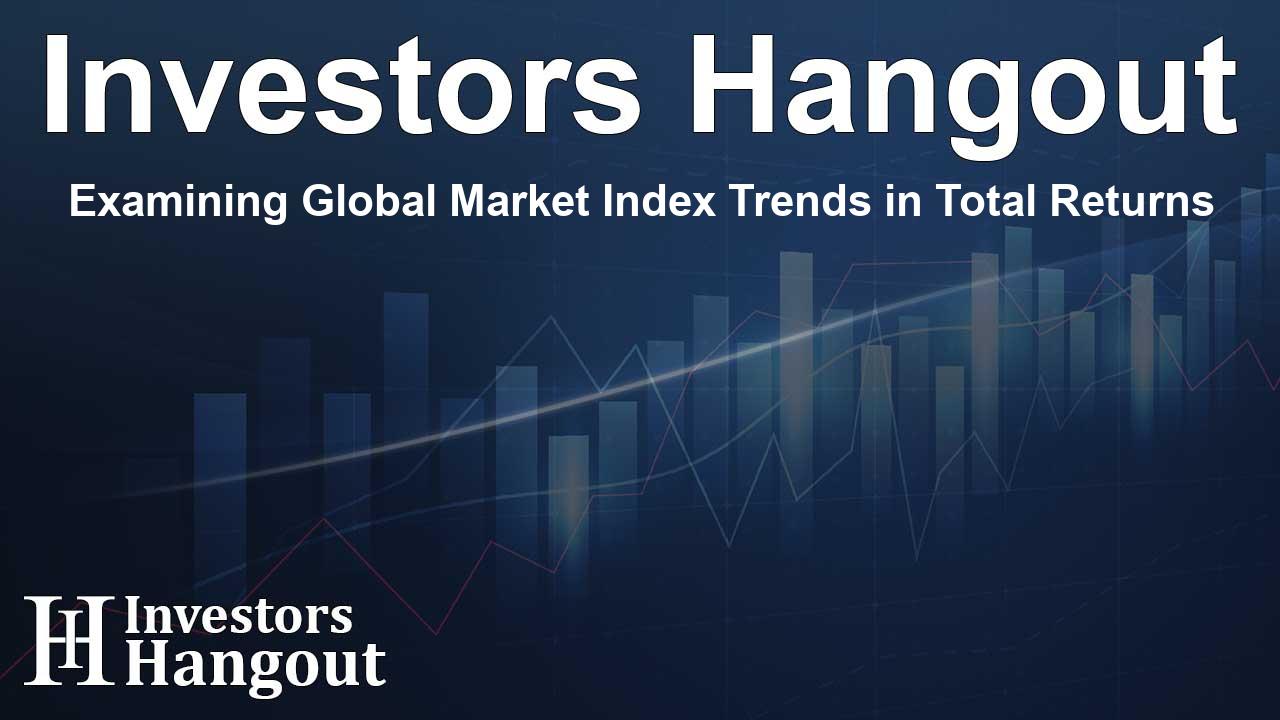Examining Global Market Index Trends in Total Returns

Understanding Recent Trends in Global Market Returns
The expected total return for the Global Market Index (GMI) has shown an increase for three consecutive months, now reaching an annualized rate of 7.3%. This rise reflects a slight uptick from the previous month's estimate of 7.2%. Despite this improvement, it remains somewhat below the realized performance of GMI over the last decade.
Components Influencing the Global Market Index
The forecast is derived from three different models designed to gauge performance for GMI. This index serves as a global benchmark, combining various major asset classes, excluding cash, thereby offering a comprehensive view for market participants. GMI’s long-term performance projections indicate a continuation of a favorable trend that began with forecasts around 7% in recent months.
However, the outlook is slightly lower than the 8.2% annualized return that GMI has maintained over the past ten years. A notable observation is that US equities are currently the outlier, exhibiting lower expected returns compared to the high-rich performance of American shares over the past decade. In contrast, other asset classes are anticipated to perform better than they did during the previous decade.
GMI as a Theoretical Benchmark for Investors
GMI serves as a theoretical benchmark for the optimal portfolio suited for investors with a long-term perspective. Its structure is designed to provide a starting point for customizing asset allocation strategies according to an individual’s investment goals, risk tolerance, and expectations. Historical data reflects that this passive benchmark often performs competitively relative to many active asset-allocation strategies, particularly after considering risk factors, trading expenses, and tax implications.
While the projected returns can fluctuate, the estimates for GMI are expected to be more stable compared to predictions for individual market components. This characteristic allows investors to aggregate forecasts, minimizing potential discrepancies over time.
Refining Expectations for Investment Projections
Using GMI forecasts as a foundation, investors can refine their expectations based on additional modeling that takes into account various external factors that may influence market dynamics. It is also advisable for investors to tailor their portfolios to reflect their individual risk profiles and time horizons.
For a broader sense of GMI’s long-term return evolution, examining its performance on a rolling ten-year basis provides critical insights. For instance, GMI recorded a return of 8.2% over the last decade, showcasing a robust investment environment during that period.
A Closer Look at Forecasting Methodologies
To further understand how these forecasts are developed, it’s beneficial to explore the various models used:
Building Block Model (BB)
The Building Block model utilizes historical returns as a means to estimate future performance, starting from January 1998, which is the earliest date data is available for the listed asset classes. This model calculates the risk premium for each asset class, combines it with an expected risk-free rate to generate a total return forecast.
Equilibrium Model (EQ)
This approach reverse engineers expected returns through the lens of risk instead of attempting to predict them directly. By leveraging reliable risk metrics, forecasting becomes slightly more accurate. Key inputs include expectations of the portfolio’s market price of risk, expected volatility of each asset, and further correlations with the GMI.
Adjusted Model (ADJ)
Similar to the Equilibrium model, the Adjusted model modifies forecasts based on short-term price momentum and long-term mean reversion factors. This method accounts for current pricing levels relative to historical averages, allowing adjustments to predictions based on prevailing market conditions.
Conclusion and Reflection on GMI's Role
Understanding GMI and its methodologies provides valuable context for investors seeking robust strategies in a potentially lower-growth environment. It’s important to keep in mind that these forecasts are tools for guidance and should be complemented with personal analysis and adjusted for the unique circumstances of each investor.
Frequently Asked Questions
What is the Global Market Index (GMI)?
The Global Market Index (GMI) is a theoretical benchmark that represents a diverse range of asset classes, providing investors with a foundational reference for portfolio management.
How are the expected returns for GMI estimated?
The expected returns are estimated using a combination of three models that analyze historical data, risk metrics, and market conditions.
Why is US equity performance considered an outlier?
US equities are projected to have lower returns compared to their substantial past performance, highlighting a shift in expectations relative to other asset classes.
How can GMI help individual investors?
GMI can serve as a starting point for investors to customize their asset allocation based on their risk tolerance and investment goals.
What methodologies are used for forecasting in GMI?
The forecasting methodologies include the Building Block model, Equilibrium model, and Adjusted model, each using different approaches to estimate future performance.
About The Author
Contact Owen Jenkins privately here. Or send an email with ATTN: Owen Jenkins as the subject to contact@investorshangout.com.
About Investors Hangout
Investors Hangout is a leading online stock forum for financial discussion and learning, offering a wide range of free tools and resources. It draws in traders of all levels, who exchange market knowledge, investigate trading tactics, and keep an eye on industry developments in real time. Featuring financial articles, stock message boards, quotes, charts, company profiles, and live news updates. Through cooperative learning and a wealth of informational resources, it helps users from novices creating their first portfolios to experts honing their techniques. Join Investors Hangout today: https://investorshangout.com/
The content of this article is based on factual, publicly available information and does not represent legal, financial, or investment advice. Investors Hangout does not offer financial advice, and the author is not a licensed financial advisor. Consult a qualified advisor before making any financial or investment decisions based on this article. This article should not be considered advice to purchase, sell, or hold any securities or other investments. If any of the material provided here is inaccurate, please contact us for corrections.
